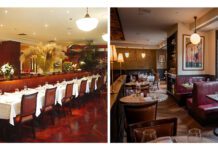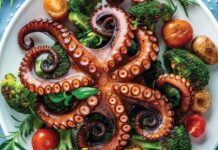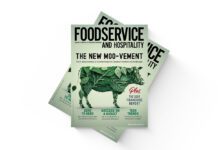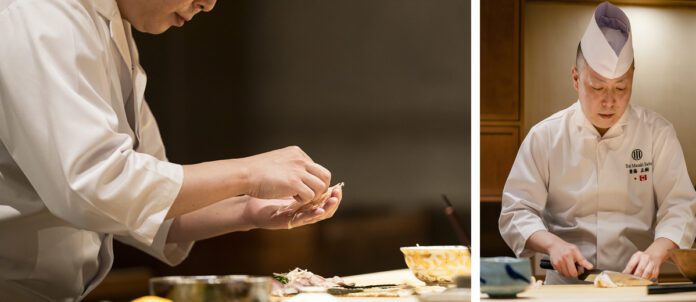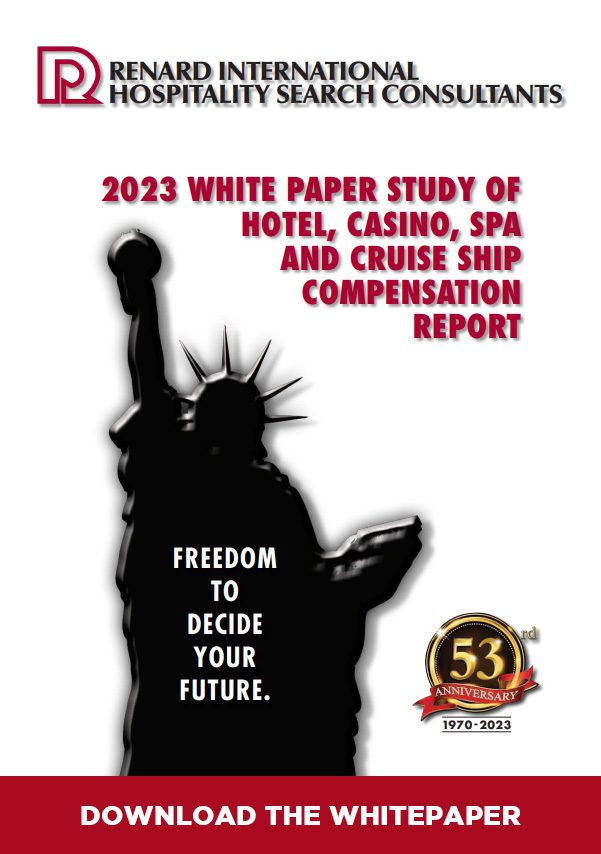As the chef at the helm of Canada’s only Michelin two-star restaurant, chef Masaki Saito has a good deal of clout associated with his name — especially given that the restaurant in question bears his name.
Sushi Masaki Saito, situated in Toronto’s upscale Yorkville neighbourhood, has been collecting accolades since its opening in 2019. In its first year, it ranked 10th on the Canada’s 100 Best Restaurants list and received the coveted title of Best New Restaurant.
The restaurant stands out in the Toronto dining scene, thanks to its emphasis on edomae-style sushi, intimate atmosphere and commitment to Omotenashi — the Japanese practice of mindful hospitality. The omakase-style experience features exclusively line-caught fish and seafood sourced directly from Japan.
“[Edomae] is a very traditional and authentic style sushi,” says Saito, explaining the sushi common in North America is a simplified, modernized take on sushi. In traditional edomae style, the fish is aged or cured to enhance flavour and texture. And, chef Saito characterizes the fare served up at his eponymous restaurant as: “edomae style, with my [added] colour.”
Commanding a per-head price of $680, chef Saito has fine-tuned every detail to ensure the ultimate dining experience. The restaurant’s internal culture has been built on providing the highest level of experience and ensuring all details can be attentively seen to.
For this reason, Sushi Masaki Saito only serves about 11 guests per night (in two seatings). It’s also the reason the restaurant is only open five nights a week, closes any time the Japanese fish markets are closed (for holidays), and does not open if the chef is feeling under the weather.
“We don’t serve our customers without the presence of Masaki Saito [or] the best ingredients that we can provide,” elaborates Jonathan Tang, the restaurant’s general manager. “We respect the chef’s decision to deliver only the best to his customers…Chef always focuses on quality first, and if he cannot get the best ingredients, we don’t open our restaurant.”
And, chef Saito notes, it’s exactly this level of commitment to quality and intense focus on refining every detail that he believes earned him his two-star Michelin rating in Canada.
The road that has led the chef to this stage in his career is remarkable in itself. Saito’s passion for sushi developed at a young age, inspired by his experiences eating at the sushi bar of the restaurant his family frequented while growing up in his native Hokkaido, Japan. But the formative memory that ultimately inspired his career was realizing just how special — how skillful — that particular sushi chef was.
“That sushi chef died of cancer, then of course, we couldn’t go to [that favourite] restaurant anymore…Even at seven/eight years old, I [recognized] that sushi restaurant was better than the new ones we tried,” he explains. “That chef became my target. When I was eight/nine years old, I decided I [would] be a sushi chef.”
This passion and goal led him to pursue an education in marine biology. Rather than attending a traditional high school, Saito took part in a three-year program that taught him about catching, caring for and preparing seafood — including hands-on experience line catching tuna.
He went on to train in Tokyo, where he learned the art of the edomae style from sushi masters. This period of his career also greatly informed the chef’s understanding of and commitment to customer care, plating and care for the fish and ingredients used.
Saito then moved to New York, where he helped open the NYC location of Sushi Ginza Onodera. Here he earned significant acclaim and recognition — receiving his first Michelin star in 2017 and gaining a two-star rating in 2018 (at age 30).
Saito’s interest in Toronto was sparked by his now business partner, restaurateur William Cheng (Shoushin). The chef spent time experiencing the Toronto dining scene and saw an opportunity to contribute to the ever-rising calibre of restaurants in Toronto.
In the future, Saito says he expects to see “many chefs and many restaurants coming to Toronto, Vancouver and Canada from other countries.” And, now that the Michelin Guide has come to Canada, Saito expects to see the number of high-calibre restaurants in the country grow, fostering the opportunity to attract an inflow of culinary tourism.
Looking ahead, chef Saito says he hopes to open additional restaurant concepts in Toronto — including those at a more accessible price point. “I want to share my skill [and], of course, the Japanese culture,” he explains. “I want to share; I want to teach.”
In fact, work is already underway to launch a new iteration of Sushi Masaki Saito’s sister restaurant Tachi — a unique stand-up omakase concept, which recently ended its years-long stint at the downtown-Toronto food hall, Chefs Hall. Saito notes that it’s difficult to be precise with opening dates, but the next iteration of Tachi is expected to open later this year.
When asked what advice he would give to young people entering the restaurant industry, Saito said: “Passion, energy and respect. Respect is very important. Chefs have to have respect for [their ingredients]; [also] the customers and chefs to each other and chefs to chefs.”
By Danielle Schalk


